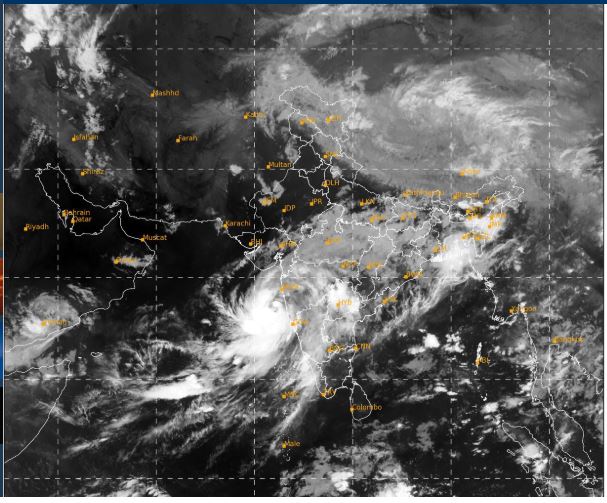The term ‘Cyclone’ is derived from the Greek word ‘Cyclos’ which means ‘Coiling of the Snake’.
In meteorology (a branch of the atmospheric sciences with a major focus on weather forecasting), a cyclone is defined as a large-scale mass of air that is rotating inwards to an area of low atmospheric pressure.
A cyclone originates with warm, moist air rising upward over the ocean forming a low-pressure area below. High-pressure air from the surrounding area flows in to fill up this low-pressure area. Continuous cycles of this phenomenon result in the formation of clouds in the air. Bigger the water body, more is the volume of clouds formed and bigger is the storm formation.
As the storm rotates faster, an eye is formed in the centre. The eye of the cyclone has the lowest atmospheric pressure and wind speeds around it can reach up to 200 kmph.
Types of Cyclones
Polar cyclones
Also known as ‘Arctic Hurricanes’, these are formed over Arctic & Antarctic seas
Mesocyclone
Usually very strong winds, it is formed as vertical spinning air columns
Tropical cyclones
Formed over tropical oceans. Indian cyclones are mostly tropical cyclones
Extratropical cyclones
Also known as ‘mid-latitude cyclones’, the winds are weaker for these while temperature gradients are sharp
Understanding the severity of cyclones
The Indian Met department categorises cyclones on the following scale:
Low Pressure Area
Wind Speeds of less than 31 kmph
Depression
Winds between 31-49 kmph
Deep Depression
Wind speeds of 50-6 kmph
Cyclone
Normal cyclonic storm. Wind speeds of 63 – 87 kilometers per hour (kmph)
Severe Cyclonic Storm
Wind speeds of 87 – 116 kmph
Very Severe Cyclonic Storm
Wind speeds of 117-165 kmph
Extremely Severe Cyclonic Storm
Wind speeds of 166 – 220 kmph
Super Cyclonic Storm
Wind speeds greater than 220 kmph
While the categorisation mentions only consistent wind speeds, the Met Department monitors over 10 parameters before issuing cyclone warnings.
How are cyclones named?
The World Meteorological Organization and UN Economic and Social Commission for Asia are and Pacific (UN ESCAP) are responsible for naming cyclones. UN ESCAP is a globally recognized body that also contains regional specialized meteorological centres (RSMC).
The Indian Meteorological Department (IMD) is one of the six RMC’s in the world whose job is to warn for upcoming cyclones, issue advisories and name cyclones over the North Indian Ocean area. If the speed of a cyclone exceeds 34 nautical miles per hour (1 nautical mile = 1.85 kilometres) then it becomes necessary to give it a special name in order for the people to easily identify them and manage logistics.
Lists of cyclone names are always created beforehand. The next cyclone over the Indian Ocean region will be called ‘Asani’ given by Sri Lanka, while the one after that will be called ‘Sitrang’, suggested by Thailand. The name ‘Jawad’ is an Arabic term meaning merciful and was given by Saudi Arabia.


One Reply to “What are cyclones? How are they formed?”
Comments are closed.